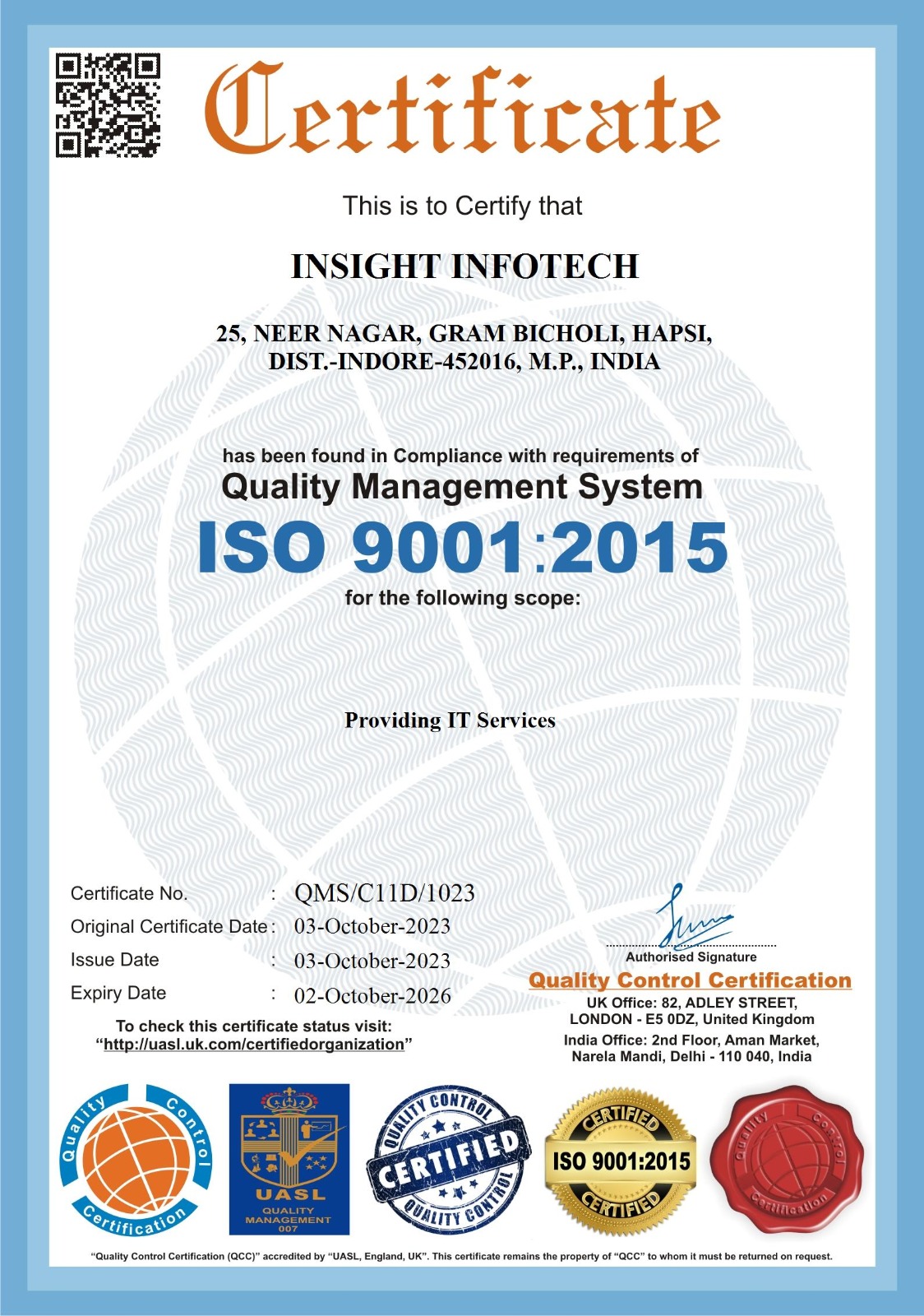Mobile App Development
Insight Info would work closely with the client to understand their vision, goals, and specific requirements for the mobile app. This includes defining the target audience, desired features, platforms (iOS, Android, or both), and any integration needs.
1. Idea and Planning: The first step is to define the purpose and goals of the mobile app. This involves identifying the target audience, understanding their needs, and determining the core features and functionalities of the app. Planning also includes defining the app's platform (iOS, Android, or both), technical requirements, and the development timeline..
2. UI/UX Design: Mobile app developers work with designers to create the user interface (UI) and user experience (UX) of the app. Designers create wireframes and prototypes to visualize the app's layout, navigation, and interactions. The goal is to ensure the app is intuitive, visually appealing, and easy to use.
3. Mobile App Development: After the design phase, developers start building the app. For native app development, developers use programming languages and development tools specific to the chosen platform. For iOS apps, they use Swift or Objective-C, while for Android apps, they use Java or Kotlin. Alternatively, developers can use cross-platform frameworks like React Native or Flutter to build apps that work on both iOS and Android.
4. Backend Development: Many mobile apps require a backend server to manage data, user accounts, and perform complex operations. Backend developers create server-side code and APIs to handle data storage, user authentication, and other server-side operations. The backend communicates with the mobile app through APIs.
5. Testing and Quality Assurance: Mobile app development involves thorough testing to identify and fix bugs, errors, and usability issues. Testing includes functional testing, performance testing, security testing, and compatibility testing on different devices and OS versions.
6. Deployment to App Stores: Once the app is tested and ready, it can be submitted to the respective app stores (Apple's App Store for iOS apps and Google Play Store for Android apps). App stores review the app for compliance with their guidelines before making it available to users for download.
7. Post-Launch Maintenance and Updates: After the app is live, developers continue to monitor its performance and user feedback. Regular updates are released to fix bugs, add new features, improve performance, and adapt to changes in OS versions or device specifications.
8. User Support and Feedback: Mobile app development is an ongoing process that involves user support and addressing user feedback. Developers continuously gather feedback from users to understand their needs and improve the app's functionality and user experience.


